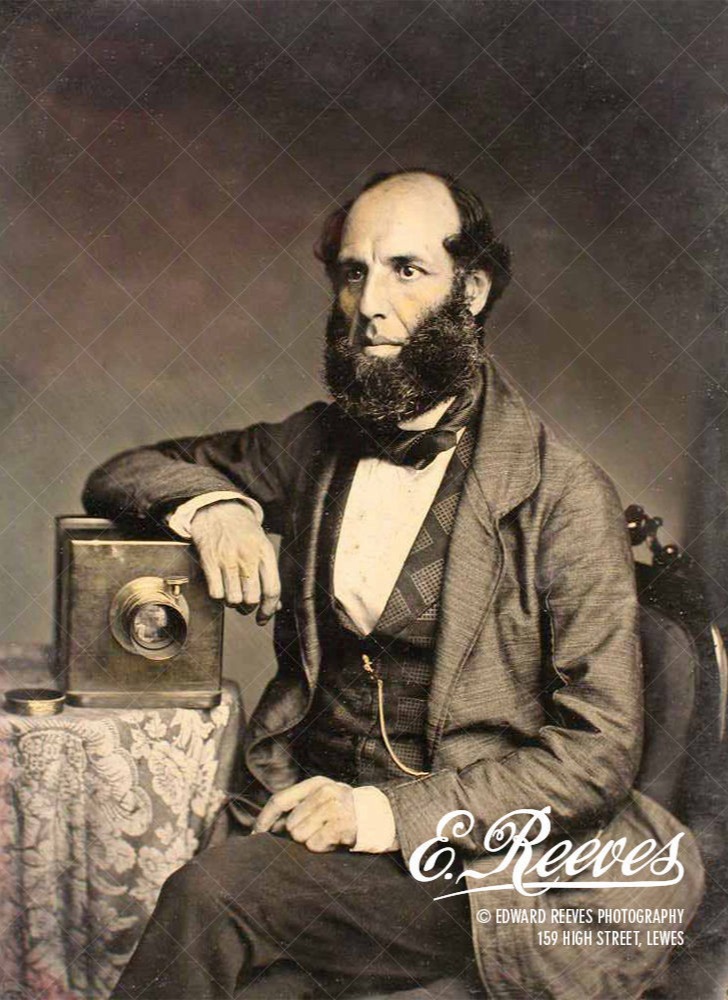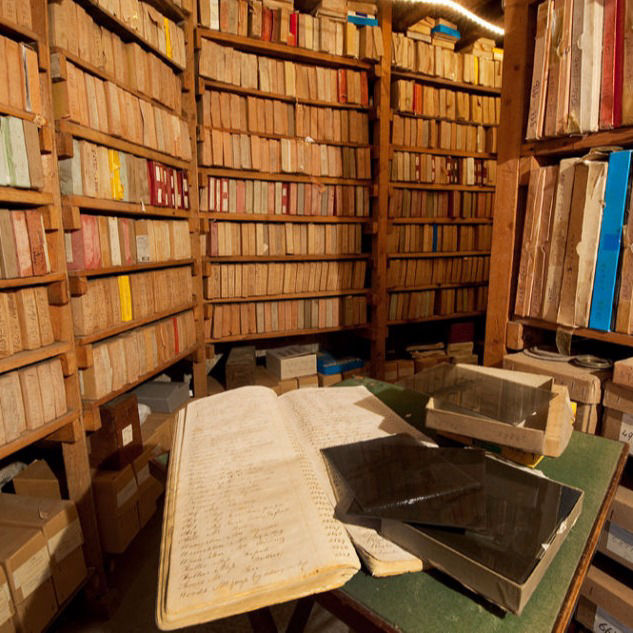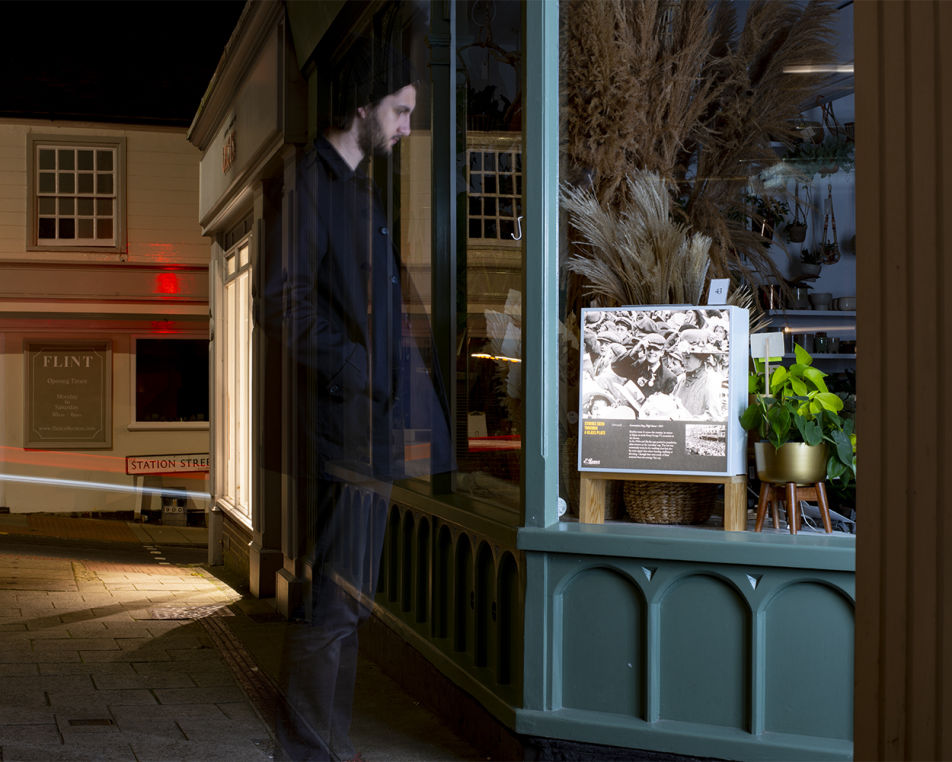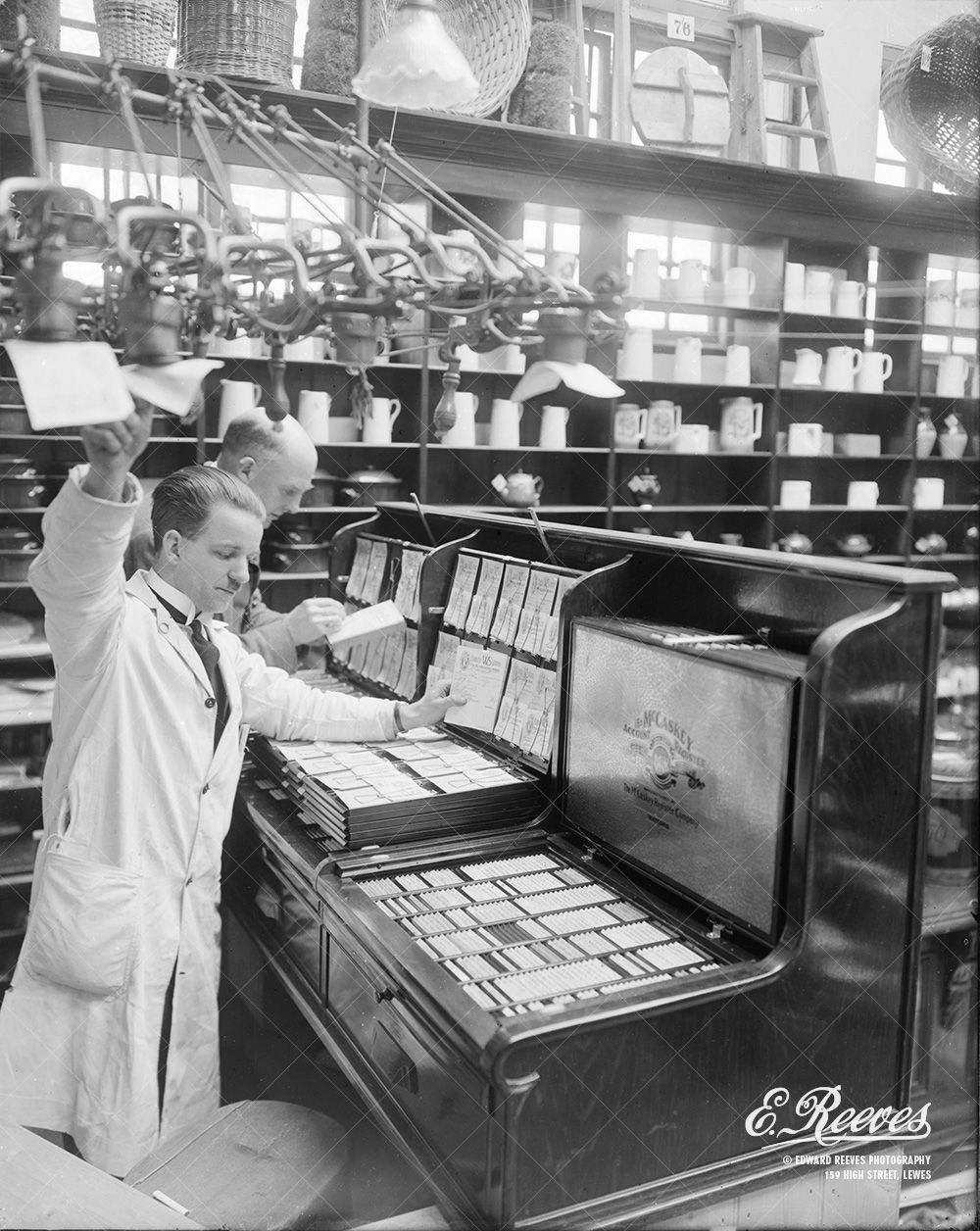UPCOMING EXHIBITION
STORIES SEEN THROUGH A GLASS PLATE:
WORKING LEWES
An exhibition of 80 lightboxes in windows around Lewes
This evocative exhibition tells the stories of Lewes residents at work over a period of 100 years, offering an intimate glimpse into their working lives, and the town’s resilient community spirit.
THE EDWARD REEVES ARCHIVE PROJECT
Investigating and preserving the world’s oldest photographic studio and archive.
THE EDWARD REEVES ARCHIVE PROJECT
Investigating and preserving the world’s oldest photographic studio and archive.
THE ARCHIVE
Edward Reeves took up the new medium of photography in the early 1850s.
In 1858 he moved to 159 High Street where he built a daylight photographic studio in the garden. That studio is still in use today and the business he founded has passed through four generations of the Reeves family. Edward Reeves Photography is now owned and run by Edward’s great grandson Tom Reeves together with his wife Tania Osband.
The business is now accepted to be the world’s longest established photographic studio, still run on the original premises by the same family.
Since the beginning all the negatives of the images created in the business have been kept in order that ‘copies may be obtained at any time’. An archive room adjoining the studio contains around 250,000 negatives on glass plates as well as a similar number on sheet and roll film. The present-day output of the studio continues adding to the archive in the form of digital images.
Unique and of great importance is that from the very beginning in 1855 every image has been numbered and listed in ledgers listing client and subject with dates in chronological order. In addition to this a surprising amount of business records and correspondence dating as far back as the 1860s has been preserved.
As well as the image archive and the studio itself, a large collection of photographic and lighting equipment, studio furniture, props and backdrops has been kept by the owners.
The subject matter covered by the business has always been wide and varied; from studio portraits and weddings to industrial and commercial subjects throughout Sussex and beyond, as well as a myriad pictures taken as ‘views’ for sale as cards and prints. The archive therefore not only represents an invaluable record of Sussex life, but also a history of commercial photography from its very beginnings.


THE PROJECT
Edward Reeves Photography has always been a commercial photographic business.
Images have been kept and carefully indexed so that clients c obtain copies and reorder at a later stage. That is why the paperwork was originally preserved. It has been kept partly by design and partly because of circumstance; for instance the very fact that the business stayed in the original, not insubstantial, building. However respect for the work of the forebears lies at the heart of this unique collection.
Over the years there have been many requests for access to this archive, usually with a specific subject in mind. It was generally felt that these approaches would significantly hinder the day to day running of the business. In addition to this the current owners, who personally accessed the collection through the original, increasingly fragile ledgers, were also aware that giving third parties such access could potentially disrupt the historical material, and so requests for access were routinely refused.
However, in 2013 Brigitte Lardinois, then Senior Research Fellow at the London College of Communication, proposed a holistic project. She was not interested in a specific topic but instead suggested collating and assessing all the historical material held by the business and thence finding ways to preserve it and make it accessible.
The project would concentrate on the glass plate holdings, the work of the first three generations of the Reeves family in order to draw a distinction between the historical and the present day business.
The image bank itself and the basic negative number ledgers were the ‘knowns’ of the archive at the beginning, indeed on request they could be accessed that way, mostly through the knowledge that Tom Reeves the current owner has built up after more than forty years in the business.
However, what soon came to light was that there was an enormous amount of very rare supporting business documentation, correspondence and ephemera.
This material was distributed throughout the premises (which is also the Reeves’ family home), aand over the years, notably during lockdown, additional material has been found.
In addition to this there is the historical equipment and artefacts.
The aim is to make an inventory of all this material so a case can be made for a grant that can help make sure that all this can be preserved, in the place of origin.It should eventually be possible to select a portrait from the 1870s, find from the ledger who is the subject, find from the business records where the subject lived and how much they paid for the photograph, and reconstruct in the studio the set up of furniture and backdrop which was used. This potential is unique. Professor Elizabeth Edwards, the eminent photographic historian, has called this project one of the most exciting recent developments in the history of British photography.
In the long term, the project has many possible outcomes. The digitisation of the written records (to date with the help of a dedicated group of volunteers over 80.000 entries have already been translated from copperplate to excel sheet) will allow the image archive to be searched by name or subject, and so will open access to an invaluable historical resource. Together with the business records, this will shed light on the evolution of commercial photographic practice since its beginnings. An overall survey of the archive will allow us to investigate the way in which photography has become an integral and indispensable part of society over nearly two centuries.
We hope that with every exhibition, event and talk we are helping to connect the present generation with its past and encourage an appreciation of the role of commercial photography in the history of the medium.



